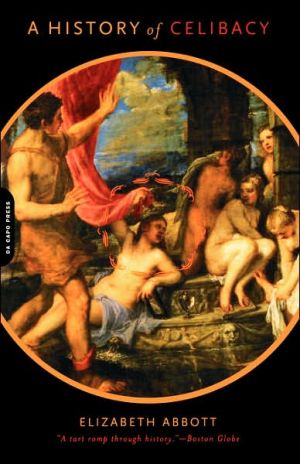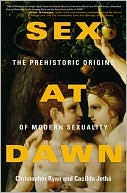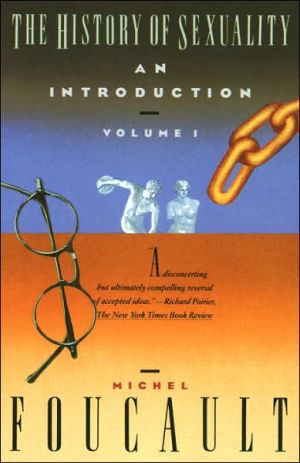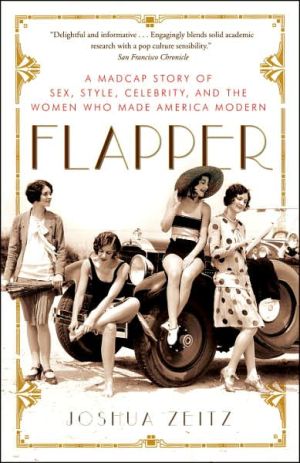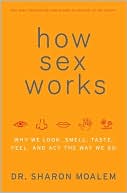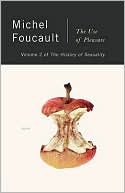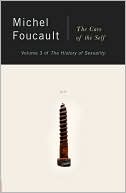A History of Celibacy: Experiments Through the Ages
Celibacy is a worldwide practice that is often adopted, rarely discussed. Now, in Elizabeth Abbott's fascinating and wide-ranging history, it is examined in all its various forms: shaping religious lives, conditioning athletes and shamans, surfacing in classical poetry and camp literature, resonating in the voices of castrati, and permeating ancient mythology. Found in every society of the past, practiced by both the anonymous and the legendary (St. Catherine, Joan of Arc, Leonardo da Vinci,...
Search in google:
First time in paperback: "An ambitious and wide-ranging history" (The New Yorker) of 3000 years of celibacy, from the vestal virgins of Rome to contemporary athletes
A History of Celibacy\ \ By Elizabeth Abbott \ Da Capo Press\ Copyright © 2001 Elizabeth Abbott\ All right reserved. \ ISBN: 0306810417 \ \ \ \ \ Introduction\ \ \ Considering Celibacy\ Two incidents inspired me to launch a wide-ranging exploration of celibacy. The first, and most significant, was the 1990 revelation, trumpeted in the international media, that a number of the avowedly celibate Christian Brothers of Mount Cashel Orphanage in Newfoundland were actually practicing pedophiles who preyed, with hands, tongues, penises, straps, and chains, on the foundlings entrusted to their care. The second was a friend's whispered confidence that a certain husband of our acquaintance tolerated his wife's infidelity because he was chaste, startling news that was my introduction to the New Celibacy.\ I began my research assuming I knew what celibacy was: abstinence from sexual intercourse, usually self-proclaimed. I also thought that, as a long-term commitment, it was unnatural. In fact, my initial working title was "Celebrating the Unnatural: The Story of Celibacy," and among my friends, it was nicknamed "The Dry Season."\ This tittering stage of the project was short-lived. Soon into the research that would ultimately consume me for over six years, I was struck by the narrowness of my Christianity-oriented perspective and my simplistic definition. Throughout the world and the ages, celibacy has been a key element of human existence. In all its various forms, it has shaped religious lives, as well as the lives of laity, and its embrace has included the very young and the very old. It has haunted widows and prisoners, and conditioned athletes and shamans. It has pulsated throughout classical poetry and camp literature, throughout canon and civil law.\ Everywhere I looked, celibacy loomed. It resonated in the mellifluous sopranos of Italy's operatic castrati, in the agonized shrieks of little girls kept housebound and pure by foot-binding, and of little boys made more useful by castration. It wafted up from dingy harems and from sun-kissed Incan temples. It permeated ancient history, from the celibate shift workers of the Oracle of Delphi and the virginal trio of Athena, Artemis, and Hestia, the Greek world's greatest goddesses, to Rome's majestic vestal virgins. It echoed in Hamlet's ringing "Get thee to a nunnery!" urging Ophelia to accept the fate of so many other unwanted, unwillingly cloistered women.\ Celibacy paraded through history under a legion of names. It was Joan of Arc, Elizabeth I of England, Florence Nightingale. It was Mahatma Gandhi and his curious brahmacharya experiments, the naked nights he spent with nubile young women, testing his chastity. It was the ranting disharmony of The Kreutzer Sonata, as Leo Tolstoy pounded out his message of celibacy. It was Leonardo da Vinci, fearful of a second accusation of sexual impropriety, Sir Isaac Newton mourning his lover's defection, Lewis Carroll looking but not daring to touch a procession of young Alices in Wonderland.\ Celibacy is also writ large in the world's medical literature, monopolizing large sections of textbooks and the wisdom of most cultures. Therein are elaborated a wealth of semen-centered perspectives and philosophies, and detailed instructions about regimens that help conserve the precious, protein-rich ejaculate.\ Celibacy abounds as well in symbols. Most typical Western kitchens harbor the shades of the intense, celibate social movement that sought to encourage semen-focused celibacy and quench the embers of sensuality: which one of us hasn't at one time enjoyed cornflakes and Graham flour, designed by the chaste John Harvey Kellogg and Sylvester Graham to cool ardor and promote bland healthfulness? Who does not use clothespins, brooms, or buzz saws, the inventive sublimations of chaste Shakers? Who has not given the greeting "Peace," another venerable relic of committed, Father Divine-inspired chastity?\ On today's school grounds and campuses, celibacy also marches under the banners of students pledged to the proposition that True Love Waits. Celibacy announces itself among the graying population of self-proclaimed reborn virgins. It peeps out through the gaunt boniness of anorexic women dedicated to mastering their bodies, and in the chaste handshakes of gay men who have forsworn the deadly risks of AIDS-haunted sex.\ Celibacy, I quickly understood, was a staggering panorama of reality, involving humanity everywhere and always. As I expanded the parameters of my research, I altered and refined my working definition, scrapped the title and underlying hypothesis that assumed celibacy was unnatural, and began to listen closely to what my data could tell me.\ My second, tongue-in-cheek working title, "The Kama Sutra of Celibacy," hit closer to the mark, but was too ambitious: the more I read, the more I realized my lifetime would be too short to produce a survey of celibacy as comprehensive as the collected wisdom of the Kama Sutra is about sexual expression. A much more feasible goal was to identify, interpret, and describe as many experiments in celibacy as I could. This notion eventually shaped this book.\ I also drafted a definition of celibacy that discarded the rigidly pedantic and unhelpful distinctions between celibacy, chastity, and virginity, all of which I used as key words in my research. Despite dry, dictionary distinctions, they are, in the context of this book, synonymous. Risking tedium, I cite Webster's dictionary. Chastity as it relates to sexuality is "abstention from unlawful sexual activity: said especially of women. Sexual continence; celibacy or virginity." Celibacy is "the state of being unmarried, especially that of a person under a vow." Virginity, the most unambiguous, is "the state of maidenhood, chastity, spinsterhood."\ Of course, chastity once described faithful marriage partners as well as virgins, but that concept has receded into historical usage. I follow today's common usage, in which the words chastity and celibacy are interchangeable, and virginity is as Webster defines it. Celibacy or chastity is abstaining from sexual relations, intentionally or under duress, temporarily or for indefinite periods. This definition is both simple and generous in scope, and descriptive rather than analytical. It is also the most useful and moral tool I could devise to explore the fascinating, inspiring, troubling, complex, and sometimes bizarre lifestyles of celibate men and women the world over, throughout recorded history.\ As my research accumulated, major themes and truths began to emerge. I began to perceive patterns in humankind's celibacy experiments. Slowly, tentatively, I devised categories into which, eventually, my material obligingly and comfortably fell. Not unexpectedly, sex-negative, celibacy-obsessed Christianity dominates the first part of A History of Celibacy, though its pagan and Jewish Essene antecedents marked important passages along the celibate path, and other religions, notably Hinduism, have devised unique experiments based on their own very different understandings of celibacy.\ But celibacy is at Christianity's core, the story of a divine infant miraculously born to a human, virgin mother. The issues that consumed the religion's earliest converts and proselytizers were the nature, process, and meaning of his birth. Mary became a controversial and much debated figure. The Christian fixation on celibacy, from its condemnatory preoccupation with lustful Eve to its ideological sterilization of chaste Mary and, in the Catholic Church, its rejection of married priests, has endured for twenty centuries, embraced hundreds and millions of people, and imbued Western civilization with its ideals and ideology.\ Through the lens of Christian celibacy, I saw women seize on this new doctrine as a tool to emancipate themselves from the drudgery of marriage and childbearing. Determinedly celibate, they transformed themselves into independent people who traveled extensively, studied at a time when education was a male preserve, wrote, preached, and directed their own lives, frequently in the chaste company of like-spirited women or men.\ The first of these, the feisty and courageous Desert Mothers, were contemporary with St. Paul. The chaste zealot Thecla braved hostile crowds, a burning stake, lions, bears, bulls, and an infuriated husband rather than submit again to intercourse. Later, medieval Beguines dedicated to apostolic life, but impatient with the constraints and control of convents, lived with their parents or in Beguine communities. Every day they left these havens to mingle with the poor they had pledged themselves to serve, protected from the dangers of mainstream society only by their sworn celibacy. Other enterprising religious, cloistered and uncloistered, embraced celibacy as part of their strategy to achieve sainthood. St. Catherine of Siena and her namesake, Kateri Tekakwitha, the first Iroquois saint, were among the more spectacular. Ambitious, well-born abbesses controlled convents and created near-independent fiefdoms, havens of scholarship and learning. A married laywoman, the scatterbrained but driven Margery Kempe, struggled with sexuality until she achieved chastity in her marriage, essential to her quest for posthumous beatification.\ Male religious, on the other hand, perceived the celibacy demanded of them as a continual battle against relentless lust, temptation, and the unbidden indignity of nocturnal emissions. The earnestly self-absorbed St. Augustine's heartfelt prayer, "Give me chastity, but do not give it yet," encapsulates their dilemma. Chastity brought them far fewer rewards than it did women, because as men, they were already socially empowered. As a painful consequence, they experienced celibacy more as a hunger to be starved, flagellated, or beaten into submission.\ Two of the most successful uncloistered celibate experiments were North American and working class: Mother Ann Lee's Shakers in the eighteenth and nineteenth centuries, followed by Father Divine's Peace movement in the nineteenth and twentieth centuries. Both adopted celibacy as the cornerstone of their religious communities, and their strict adherence to it enabled each of them to slice through the boundaries that so limited women and black people and kept white and black neatly segregated. Shakerism instituted egalitarian structures and accepted female leadership, black as well as white. Father Divine, the black son of freed slaves, presided over men and women, white and black, and even married a white Canadian who remained as virginal as he was. Mother Ann's and Father Divine's shared vision and their successful experiments in chaste communities proved the power of celibacy over some of the most entrenched norms of their societies. Most notably, it defused racial tensions over sex, an enormous achievement.\ Apart from its universal religious dimensions, another recurring theme in celibacy is the power of semen. The urgency of conserving this vital fluid or "life force" has led thinkers as disparate as Greek doctors, Hindu sages, athletics coaches, and moral reformers to proselytize for the celibate ideal with its promise that vigor, energy, and intellectuality will be retained along with the precious hoard of semen. French writer Honore de Balzac put it most succinctly when he groaned in postcoital tristesse, "There goes another novel!"\ Celibacy is also a pervasive theme in attaining a state conducive to communicating with spirits -- shamans and vodoun priests and priestesses must practice short-term abstinence during their apprenticeship and as a tool of their trade. This celibacy heightens their awareness and sensitivity and conciliates the gods jealous of devotees' relationships with others, mortal or divine.\ The more crucial mission of the vestal virgins, guarding Rome's sacred fire, the nation's symbolic core, demanded that these women commit to at least thirty years of virginity and perform the duties with undivided loyalty, devotion, and attention. The Incas, who had a similar system, required perpetual virginity of their acllas, the priestesses who tended the sun god and who, because they were usually chosen from among conquered peoples, were essential players in the imperial policy of postconquest reconciliation.\ Celibacy took another form altogether when it was used by nonreligious (but not necessarily unreligious) women to defy the "natural" order their world decreed for them -- subservience, servility, and submission. Joan of Arc and a Crow Indian, Woman Chief, traded womanly ways, including sex, for lives as warrior chiefs. Nineteenth-century British women glorified spinsterhood, lived in independent solitude, and forged careers: Florence Nightingale, resisting relentless family pressure, spurned suitors and marriage for virginity and a mission to transform the shameful and lowly occupation of nursing into one of the world's noblest professions. In Albania and India, rural women (who might in today's Western society be labeled transsexuals) swore perpetual celibacy, donned men's clothes and lifestyles, and became farmers. Elizabeth I of England preserved her chastity through a lifetime of passion and flirtation and, despite councillors constantly pressing her to marry for the sake of the nation, established herself as one of England's most outstanding monarchs.\ Celibacy has other benign, though less dramatic, forms. It is used to prevent conception and to encourage fertility for subsequent pregnancies in lactating women. In some societies, aging women publicly adopt it, signaling an end to their ability or willingness to endure the burdens of more childbearing.\ However, celibacy is not always so uplifting. Most notably, the great value most societies place on bridal virginity gives this dimension of celibacy a decidedly ugly side. Girls' tiny feet are no longer bound, and chastity belts are rusty museum curiosities, but female genital mutilation (FGM) and Middle Eastern "honor killings," the most flagrant examples, paint an ongoing scenario of bloody despair. Even now, six thousand little girls a day fall victim to FGM, and honor killings continue to snuff out young lives, all in the name of sexual purity.\ Of course, this ferociously monitored premarital virginity is almost exclusively a bridal trademark. Most men, except Aztec and Enga bachelors, need not be virgin bridegrooms. This inequality stems from the double standard, the very different rules that govern sexuality in men and in women. This double standard is so deeply entrenched and widespread that, for centuries, it has encouraged and justified the existence of large-scale prostitution -- in the name of celibacy. St. Augustine, always able to identify with libertine males, summarized the argument this way: "Remove prostitutes from human affairs, and you would pollute the world with lust." He and other influential moralists, religious and civil, have defended harlotry as an essential outlet for the randy males it diverts from seducing the more suitable virgins they will later marry and with whom they will procreate. The classic proof of this double standard was the late-nineteenth-century crusading journalist William Stead's purchase of an adolescent virgin he later sold to a brothel, just to prove how easily it could be done.\ Often celibacy is imposed on unwilling subjects, both male and female: prisoners; nineteenth-century schoolteachers in Russia and Canada; millions of Chinese herded into work camps in the most repressive days of Maoist China; unloved Arab wives doomed to crowded marriages with husbands who love and bed newer favorites; millions of Chinese bachelors condemned to celibate existences because the nation's "one child per family" policy provoked mass destruction of unvalued female fetuses and infants and created today's massive gender imbalance.\ Throughout history, celibacy was imposed on certain males even more brutally by surgery: castration, or excision of male genitals. Eunuchs were created for various purposes. They often served in harems, where the frustrated women could not be supervised by genitally intact men. In the Byzantine and Ottoman empires, they also filled top administrative and military posts, controlling millions of dollars and the destinies of entire peoples. A prime qualification for such plum jobs was the inability to procreate; unlike uncastrated men, who had families of their own, eunuchs could be trusted not to intrigue on behalf of the sons they would never have.\ As opera mania swept Europe in the eighteenth century, the mutilating knife found different victims: young boys it transformed into the most mellifluous sopranos who have ever graced the operatic stage. The price these beardless, rotund, and ever resentful and angry castrati consequently paid was permanent sexual inadequacy, but in the frenzied search for musical perfection, that counted for naught. Elsewhere, in India and Pakistan, men still voluntarily go under the knife to become hijras, entertainers who traditionally take vows of chastity, describe themselves as neither men nor women, and live together in celibate communities.\ Women, too, have been victims of drastic forms of celibacy. The most egregious was the hungry and hopeless life forced on Hindu widows, even tiny girls married as toddlers to husbands they never lived with. The sole alternative to this hellish existence was an early and fiery death, often involuntary, as sons and other male relatives pushed the widow onto her husband's funeral pyre.\ Celibacy also has much softer variations, for instance when it is practiced by people uneasy about expressing their unconventional sexuality -- gay men such as Leonardo da Vinci, pedophiles such as Lewis Carroll, eccentrics such as John Ruskin, and brokenhearted lovers such as Sir Isaac Newton. Celibacy can be a healing tool for victims of sexual abuse and rape, allowing them time and space to confront the issues that sexuality evokes for them. Today, in the time of AIDS, some people adopt celibacy as a tool of physical survival, just as it was, for example, in Europe's syphilis-riddled sixteenth century. When sex suddenly presents itself as a death's head, celibacy can seem like a guardian angel.\ Physical conditions causing impotence also produce unwilling celibates. The extensive lead in Rome's vaunted aqueducts, so progressive as technology and so destructive to male sexual powers, drove even the great Ovid (among other poets) into wry lyricism about his despair at a penis that was "as limp as yesterday's lettuce." Anorexia, which mostly afflicts females, has precisely the same effect -- it saps the strength from emaciated bodies so sexual energy drains away. But unlike Ovid, Karen Carpenter and her gaunt comrades are no distraught observers of their failed sexuality. Their breasts and bottoms are not all that have disappeared -- so, too, has all sexual desire.\ Celibacy's ubiquitous presence in human life is reflected in literature, and not just the Roman "impotence genre." Milton, Tolstoy, and Virginia Woolf all wrote about it. So did John Irving, whose Garp's mother had only one (albeit fruitful) lapse from celibacy. Even vampires, whose love is bloodred, are chaste.\ Over the centuries, experiments in celibacy have lost none of their fascination. In addition to our ever-younger sexually active children are increasingly proud and vocal Power Virgins, card-carrying members of True Love Waits and other pro-chastity youth movements. As part of my research, I sent away for their introductory package. It included a stylishly decorated T-shirt I sometimes wear bicycling, wondering if any passersby have noticed its unusual message.\ In fact, interest in celibacy is not confined to the junior generation. Even in middle or old age, men and women are increasingly turning to celibacy as a means of achieving personal autonomy, spirituality, and connections with God, nature, and each other. Some declare themselves reborn virgins, an apparent oxymoron solemnly sanctioned two millennia ago by Christian theologians responding to contemporary pleas that the Church recognize and dignify such a status. Other people praise the richness celibacy has given their relationships, including marriages. Like chaste husbands and wives in the first centuries of Christianity, like St. Francis of Assisi and his beloved companion, St. Clare, these men and women find peace and fulfillment in nonsexual commitment that thrives free of possessiveness or jealousy.\ At the heart of this movement toward celibacy is the ideal of choice without stigma, and each individual's right to empower and enrich his own life. The new celibacy assumes new attitudes and new ways of perceiving and judging, so that gays and lesbians are gaining mainstream recognition, men and women can cohabit chastely, and married coupledom is no longer heralded as the only acceptable form of life.\ Years into researching and drafting this history of celibacy, I myself espoused celibacy -- this despite decades as an avowed anticelibate who used to quip (and sometimes believe) I had invented sex. It happened that, several years after clawing myself out from under the debris of a collapsed marriage and assuming a new life in an unfamiliar city, I was not involved in a sexual relationship. But after vicariously experiencing -- celebrating is a better word -- the sense of liberation so many other women have derived from voluntary celibacy, I embraced it as a conscious choice. From then on, I have no longer seen myself as merely uninvolved with a man. After reevaluating my life and its priorities, including the need for deep emotional connections, I have chosen a way of life that, to a satisfying degree, incorporates my personal principles at its wellspring.\ I was profoundly impressed and influenced by some of those people whose experiments in celibacy figure in this history, the courageous women who braved the harsh and desolate desert to devote their lives to God, the proud, purposeful, and powerful vestal virgins, the maverick Native American warrior Woman Chief, and the rebellious Florence Nightingale, though their lifestyles and problems were remote from mine. More particularly, I was intensely moved by accounts of women and men driven by individual missions -- art, literature, science -- who opted for celibacy to forestall relationships that would consume the time and energy they longed to direct to their work. Much as I once reveled in sexual indulgence, I realized that at this stage of my life, I value even more the independence and serenity chaste solitude brings me. I welcome my freedom from the jealousy and possessiveness that characterized the most passionate of my relationships, and I am immensely and perpetually relieved that someone else's domestic demands no longer dominate my daily agenda.\ I also cherish the unexpected outpouring of confidences that mention of this history of celibacy has elicited, from friends and acquaintances who had never before disclosed details of their intimate lives. Even never-met Internet and phone-only pals have responded spontaneously to even the briefest mention of my current undertaking, amazing me with the frankness and the humor that color the stories of their own, almost always deliberate, celibacy. The bonds formed between us are an unforeseen reward of my own public venture into chastity. Their revelations, sparked by my own, are part of the final chapter in this history of celibacy.\ \ Continues...\ \ \ \ Excerpted from A History of Celibacy by Elizabeth Abbott Copyright © 2001 by Elizabeth Abbott. Excerpted by permission.\ All rights reserved. No part of this excerpt may be reproduced or reprinted without permission in writing from the publisher.\ Excerpts are provided by Dial-A-Book Inc. solely for the personal use of visitors to this web site. \ \
\ From Barnes & NobleMost readers think that they already know all too much about celibacy. But Elizabeth Abbott knows otherwise. Her stimulating history of celibacy corrects popular misconceptions about just saying no. Taking a self-controlled stroll down the centuries, this Trinity College dean shows us that people throughout history have decided for diverse reasons that sexual abstinence is the best policy. Among those she names as conscientiously chaste are Sir Isaac Newton and Joan of Arc. Perhaps Abbott's most refreshing argument, though, is her vigorous rebuke of the widely held notion that celibacy is essentially a religious concept. Citing ancient Roman vestal virgins, modern terrorists, and semen-conserving star athletes, she proves that people refrain from sex for all kinds of reasons; many of them quite secular.\ \
